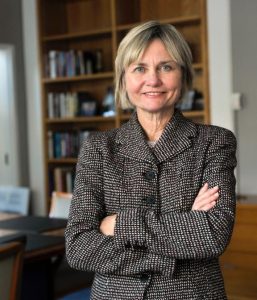U.S. Federal Reserve Chairwoman Janet Yellen testified before Congress that negative interest rates are not out of the question. “I wouldn’t take them off the table but we would have work to do to judge whether they would be workable here,” she said during testimony to the Senate Banking Committee.
Dan Busby, president of the Evangelical Council for Financial Accountability (ECFA), described negative interest rates as in the “imponderable” category on the potential negative impact on charities.
The Fed raised its benchmark interest rate this past December — the first time in nearly a decade — from almost zero to 0.4 percent. Despite a strong U.S. job market, a woeful start to the year for stocks — especially overseas – has raised concerns regarding an economic slowdown or worse.
“We had previously considered them [negative interest rates] and decided they would not work well to foster accommodation back in 2010. In light of the experience of European countries and others that have gone to negative rates, we’re taking a look at them again because we would want to be prepared in the event that we needed to add accommodation,” she said. “We haven’t finished that evaluation. We need to consider the U.S. constitutional context, whether they would work well here; it’s not automatic.”
The European Central Bank (ECB) lowered its bank lending rate below zero in 2014 to encourage banks to put cash to use and spur economic activity. Denmark, Sweden and Switzerland have since joined the “Less Than Zero Club.” The Bank of Japan in January went below zero and the next month, Sweden’s central bank went lower, dropping from -0.35 percent to -0.5 percent.
Even though going from a 1.5 percent return on investments to zero is the same spread as going from zero to -1.5 percent, Busby said there would be a “huge psychological difference” in paying to have funds on deposit instead of just receiving zero return.
To reduce cash balances, nonprofit financial managers likely would increase their efforts to minimize the amount they would pay in negative interest rates and, in some cases, consider more risky investments. “It would be a time for governing boards of nonprofits to be sure there is adherence to investment policies and give careful study before significant changes are made in investment policies, in an effort to mitigate the impact of negative interest rates,” Busby said.
Fundamentally, a shift toward slightly negative interest rates shouldn’t be much different from other decreases in interest rates in that it would create an incentive to shift the balance of an endowment’s portfolio away from “safe” investments toward things that can provide a greater return, according to Brian Mittendorf, Ph.D., professor of accounting at The Ohio State University’s Fisher College of Business and nonprofit finance expert.
“In this case, it would just be a bit more extreme since there would be an explicit punishment for keeping some of the portfolio in cash or cash equivalents,” he said.
The reason for a rate cut would be boosting incentives for spending, as the traditional tradeoff for consumers and businesses is between spending and saving. For organizations with endowments, however, such a tradeoff does not exist since the funds will be saved regardless. The tradeoff is instead between different types of investments, said Mittendorf. The net effect for these organizations could actually be reduced spending: with less attractive investment options comes lower returns and the need to revisit spending policies.
How nonprofit managers react to a move toward negative interest rates would depend on the existing asset base. “For those with large endowments and reliance upon the spending on them for programs, I’d suspect they are re-evaluating their defensive positions to weather the uncertainty in the market while also keeping a steady eye towards long-term returns,” said Bob Mims, controller and director of investments at Memphis, Tenn.-based Ducks Unlimited.
“This will manifest in the form of well thought-out moves in asset allocations on endowments to protect downside risk while holding positions to continue long-term returns. For nonprofits that are leveraged, it creates opportunities to review assets and debt in a way that could improve financial strength,” he said.
“A key component to looking at the external factors they can’t control is for nonprofits to have a long-term view not only of their mission but also of their balance sheet in terms of operating within their means that can weather wild interest rate fluctuations beyond their control,” Mims said.
A recent survey of 54 endowments and foundations ranging in assets from $50 million to $1 billion indicated that a slowdown in global growth was by far the primary concern, well ahead of rising interest rates, potential overseas conflicts or Fed “tapering.” Almost half of those surveyed in January expect interest rates to increase by less than 0.5 percent and almost as many expect rates to rise by 0.5 to 1 percent.
To see more of this story click here: http://bit.ly/1SQMjy1










